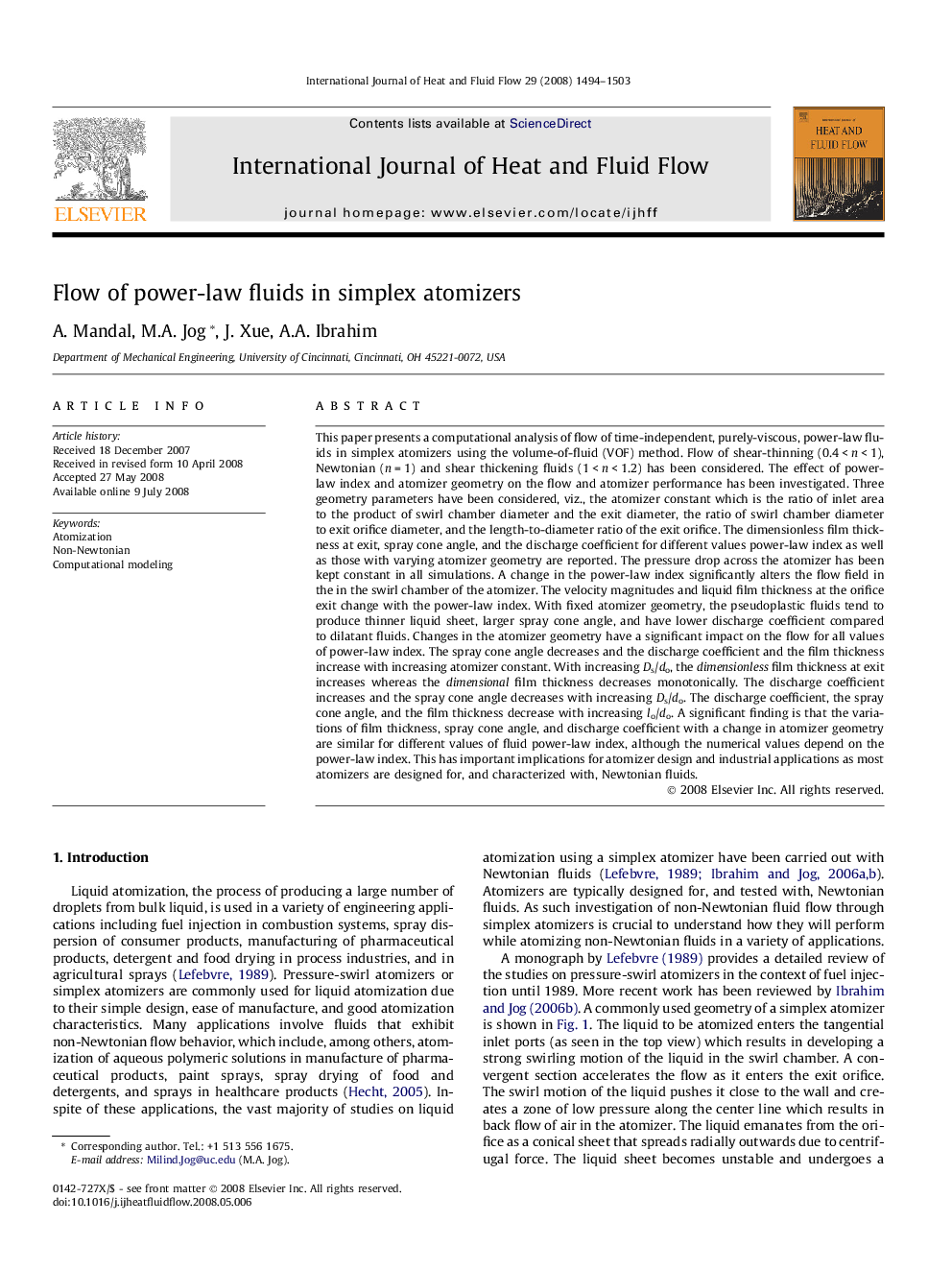| کد مقاله | کد نشریه | سال انتشار | مقاله انگلیسی | نسخه تمام متن |
|---|---|---|---|---|
| 655687 | 1457668 | 2008 | 10 صفحه PDF | دانلود رایگان |

This paper presents a computational analysis of flow of time-independent, purely-viscous, power-law fluids in simplex atomizers using the volume-of-fluid (VOF) method. Flow of shear-thinning (0.4 < n < 1), Newtonian (n = 1) and shear thickening fluids (1 < n < 1.2) has been considered. The effect of power-law index and atomizer geometry on the flow and atomizer performance has been investigated. Three geometry parameters have been considered, viz., the atomizer constant which is the ratio of inlet area to the product of swirl chamber diameter and the exit diameter, the ratio of swirl chamber diameter to exit orifice diameter, and the length-to-diameter ratio of the exit orifice. The dimensionless film thickness at exit, spray cone angle, and the discharge coefficient for different values power-law index as well as those with varying atomizer geometry are reported. The pressure drop across the atomizer has been kept constant in all simulations. A change in the power-law index significantly alters the flow field in the in the swirl chamber of the atomizer. The velocity magnitudes and liquid film thickness at the orifice exit change with the power-law index. With fixed atomizer geometry, the pseudoplastic fluids tend to produce thinner liquid sheet, larger spray cone angle, and have lower discharge coefficient compared to dilatant fluids. Changes in the atomizer geometry have a significant impact on the flow for all values of power-law index. The spray cone angle decreases and the discharge coefficient and the film thickness increase with increasing atomizer constant. With increasing Ds/do, the dimensionless film thickness at exit increases whereas the dimensional film thickness decreases monotonically. The discharge coefficient increases and the spray cone angle decreases with increasingDs/do. The discharge coefficient, the spray cone angle, and the film thickness decrease with increasing lo/do. A significant finding is that the variations of film thickness, spray cone angle, and discharge coefficient with a change in atomizer geometry are similar for different values of fluid power-law index, although the numerical values depend on the power-law index. This has important implications for atomizer design and industrial applications as most atomizers are designed for, and characterized with, Newtonian fluids.
Journal: International Journal of Heat and Fluid Flow - Volume 29, Issue 5, October 2008, Pages 1494–1503